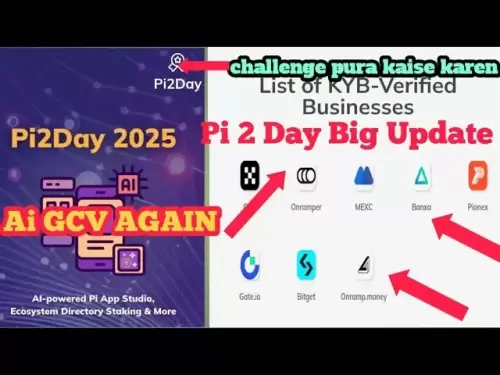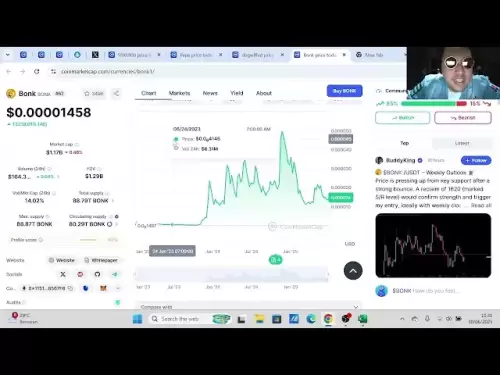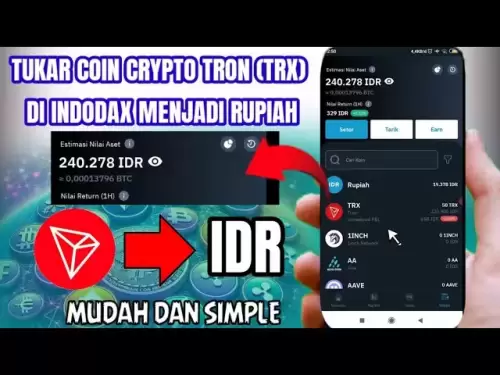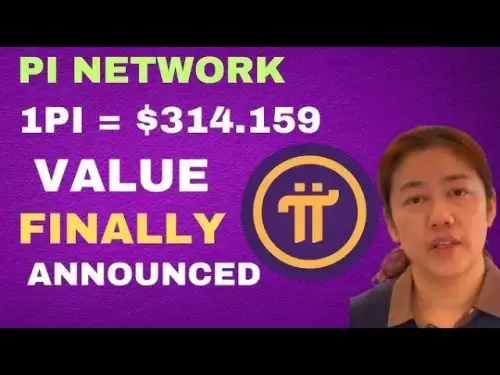-
 Bitcoin
Bitcoin $108,489.6704
1.13% -
 Ethereum
Ethereum $2,502.0528
2.92% -
 Tether USDt
Tether USDt $1.0002
0.00% -
 XRP
XRP $2.1941
0.51% -
 BNB
BNB $655.3375
1.00% -
 Solana
Solana $151.5977
1.27% -
 USDC
USDC $0.9999
0.00% -
 TRON
TRON $0.2768
0.32% -
 Dogecoin
Dogecoin $0.1676
2.86% -
 Cardano
Cardano $0.5675
0.98% -
 Hyperliquid
Hyperliquid $40.6109
7.48% -
 Bitcoin Cash
Bitcoin Cash $500.7746
2.09% -
 Sui
Sui $2.8328
2.03% -
 Chainlink
Chainlink $13.4452
1.26% -
 UNUS SED LEO
UNUS SED LEO $9.1623
0.39% -
 Avalanche
Avalanche $18.2267
2.24% -
 Stellar
Stellar $0.2382
0.00% -
 Toncoin
Toncoin $2.8885
1.68% -
 Shiba Inu
Shiba Inu $0.0...01159
0.91% -
 Litecoin
Litecoin $87.1827
0.88% -
 Hedera
Hedera $0.1511
2.90% -
 Monero
Monero $315.4992
-0.59% -
 Polkadot
Polkadot $3.4663
2.34% -
 Bitget Token
Bitget Token $4.6118
-0.65% -
 Dai
Dai $1.0000
-0.01% -
 Ethena USDe
Ethena USDe $1.0003
0.02% -
 Uniswap
Uniswap $7.2989
4.69% -
 Pepe
Pepe $0.0...01003
5.73% -
 Aave
Aave $275.5616
7.15% -
 Pi
Pi $0.5181
-2.49%
How to convert art into NFT? Teach you how to complete encrypted creation step by step
Artists can monetize digital creations by converting them into NFTs on platforms like Ethereum, using wallets like MetaMask, and listing them on marketplaces like OpenSea.
May 08, 2025 at 05:07 am
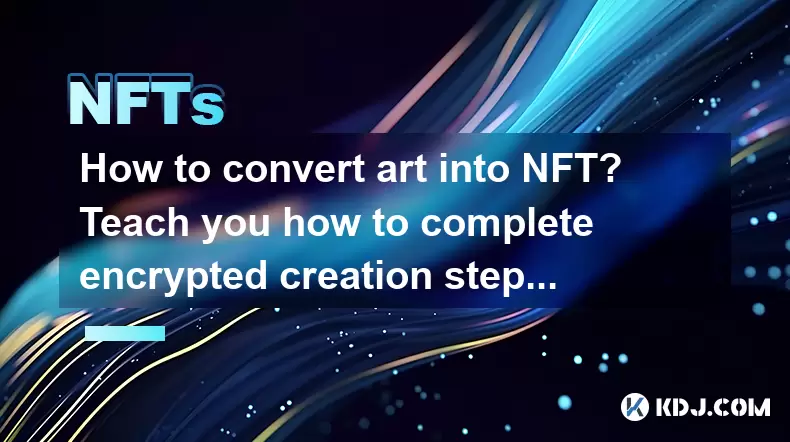
Converting art into a non-fungible token (NFT) has become a popular way for artists to monetize their digital creations. This process involves transforming your artwork into a unique digital asset that can be bought, sold, and traded on various blockchain platforms. In this guide, we will walk you through the steps to complete your encrypted creation, turning your art into an NFT.
Preparing Your Artwork
Before you begin the process of converting your art into an NFT, it is crucial to ensure that your artwork is ready for digital transformation. Start by digitizing your artwork if it is not already in a digital format. This might involve scanning a physical piece or ensuring that your digital creation is in a suitable file format such as JPEG, PNG, or GIF.
Once your artwork is in a digital format, consider the size and resolution of the file. High-quality images are more appealing to potential buyers, so aim for a resolution that showcases your work in the best possible light. Additionally, you may want to add any necessary metadata or descriptions to your file, as this information can be valuable when listing your NFT on a marketplace.
Choosing the Right Blockchain Platform
The next step in converting your art into an NFT is selecting the appropriate blockchain platform. Ethereum is the most popular choice due to its widespread adoption and the availability of NFT marketplaces like OpenSea and Rarible. However, other blockchains such as Binance Smart Chain and Flow also support NFTs and may offer different advantages, such as lower transaction fees.
When choosing a platform, consider factors such as the platform's user base, transaction fees, and the ease of minting and listing your NFT. Research different platforms and read user reviews to find the one that best suits your needs. Once you have selected a platform, you will need to set up a digital wallet compatible with that blockchain, such as MetaMask for Ethereum.
Setting Up Your Digital Wallet
To interact with the blockchain and mint your NFT, you will need a digital wallet. For Ethereum-based NFTs, MetaMask is a popular choice due to its user-friendly interface and compatibility with most NFT marketplaces. Here’s how to set up a MetaMask wallet:
- Download and install the MetaMask extension from the Chrome Web Store or the MetaMask website.
- Create a new wallet by following the on-screen prompts. You will be asked to create a password and back up your recovery phrase.
- Securely store your recovery phrase, as it is essential for accessing your wallet if you lose your password.
- Fund your wallet with the necessary cryptocurrency (such as ETH for Ethereum) to cover transaction fees when minting your NFT.
Minting Your NFT
With your artwork prepared and your digital wallet set up, you are ready to mint your NFT. Minting is the process of creating and publishing your artwork on the blockchain as a unique token. The exact steps can vary depending on the platform you are using, but here is a general guide for minting an NFT on OpenSea:
- Navigate to the OpenSea website and connect your digital wallet (e.g., MetaMask).
- Click on "Create" and then "My Collections" to start a new collection or add to an existing one.
- Upload your artwork and fill in the required details such as the name, description, and any additional properties or unlockable content.
- Set your royalties if you want to earn a percentage of future sales of your NFT.
- Click "Create" to mint your NFT. You will need to confirm the transaction in your wallet and pay the associated gas fees.
Listing Your NFT for Sale
After minting your NFT, the next step is to list it for sale on the marketplace. On OpenSea, you can choose to list your NFT for a fixed price or as an auction. Here’s how to list your NFT:
- Go to your profile on OpenSea and find the NFT you want to list.
- Click on the NFT and then select "Sell."
- Choose your preferred selling method (fixed price or auction) and set the price or starting bid.
- Review the listing details and click "Complete Listing."
- Confirm the transaction in your wallet to finalize the listing.
Once your NFT is listed, it will be visible to potential buyers on the marketplace. You can share the link to your NFT on social media or other platforms to attract more attention and increase your chances of making a sale.
Managing and Promoting Your NFT
After listing your NFT, it is important to manage and promote it effectively. Keep an eye on your NFT’s performance on the marketplace and be prepared to adjust your listing if necessary. You can also engage with the NFT community by joining relevant social media groups, attending virtual events, and networking with other artists and collectors.
Promoting your NFT can significantly increase its visibility and value. Consider creating a website or blog to showcase your work, and use social media platforms to share updates and engage with your audience. Collaborating with other artists or influencers in the NFT space can also help you reach a wider audience and build your brand.
Frequently Asked Questions
Q: Can I convert any type of art into an NFT?
A: Yes, you can convert various types of art into NFTs, including digital art, music, videos, and even physical art that has been digitized. However, ensure that you have the rights to the artwork before minting it as an NFT.
Q: How much does it cost to mint an NFT?
A: The cost of minting an NFT varies depending on the blockchain platform and current network congestion. On Ethereum, you will need to pay gas fees, which can range from a few dollars to over $100 during peak times. Other platforms may have lower fees but different requirements.
Q: Can I sell my NFT on multiple marketplaces?
A: Yes, you can list your NFT on multiple marketplaces, but be aware that some platforms may have exclusivity agreements or different listing requirements. Always check the terms and conditions of each marketplace before listing your NFT.
Q: What happens if my NFT doesn't sell?
A: If your NFT doesn't sell, you can relist it at a different price, promote it more aggressively, or consider listing it on another marketplace. You can also hold onto it and wait for the right buyer, as the value of NFTs can fluctuate over time.
Disclaimer:info@kdj.com
The information provided is not trading advice. kdj.com does not assume any responsibility for any investments made based on the information provided in this article. Cryptocurrencies are highly volatile and it is highly recommended that you invest with caution after thorough research!
If you believe that the content used on this website infringes your copyright, please contact us immediately (info@kdj.com) and we will delete it promptly.
- Ripple, Stablecoin, Adoption: RLUSD Leading the Charge
- 2025-06-30 14:30:12
- Bitcoin ETF, IBIT, and the Bull Flag: Is $144,000 on the Horizon?
- 2025-06-30 14:50:12
- Bitcoin, Passive Income, and a Bull Raise: Riding the Crypto Wave
- 2025-06-30 14:30:12
- FxWirePro: Optimism (OP) Token Unlock Looms – Will It Sink or Swim?
- 2025-06-30 15:47:14
- Bitcoin, Personal Loans, and Omega 88: A New Era in Lending?
- 2025-06-30 15:09:14
- Saylor's Strategy: How MicroStrategy's Bitcoin Bet is Reshaping Finance
- 2025-06-30 14:52:14
Related knowledge

How are NFTs stored and traded? What are the common technical standards?
Jun 20,2025 at 08:49am
Understanding NFT Storage MechanismsNon-Fungible Tokens (NFTs) are digital assets that represent ownership of a unique item or piece of content, such as art, music, videos, or virtual real estate. The way NFTs are stored is crucial to their security and accessibility. Most NFTs are built on blockchain platforms like Ethereum, and the actual file—such as...
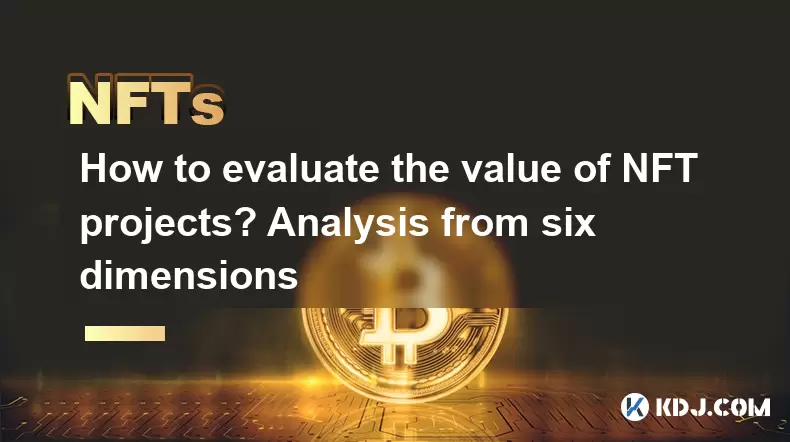
How to evaluate the value of NFT projects? Analysis from six dimensions
Jun 21,2025 at 02:28pm
1. Project Background and Team CredibilityEvaluating the value of NFT projects begins with a thorough understanding of its background and team composition. A credible project is usually backed by experienced developers, designers, and marketers who have a proven track record in blockchain or digital art industries. The presence of identifiable team memb...

What is the difference between NFT and digital collectibles? A must-read guide for beginners
Jun 19,2025 at 09:42pm
Understanding the Basics of NFTsNFTs, or Non-Fungible Tokens, are unique digital assets that represent ownership of a specific item or piece of content on the blockchain. Unlike cryptocurrencies such as Bitcoin or Ethereum, which are fungible and can be exchanged one-for-one, each NFT has distinct properties and cannot be directly replaced by another to...
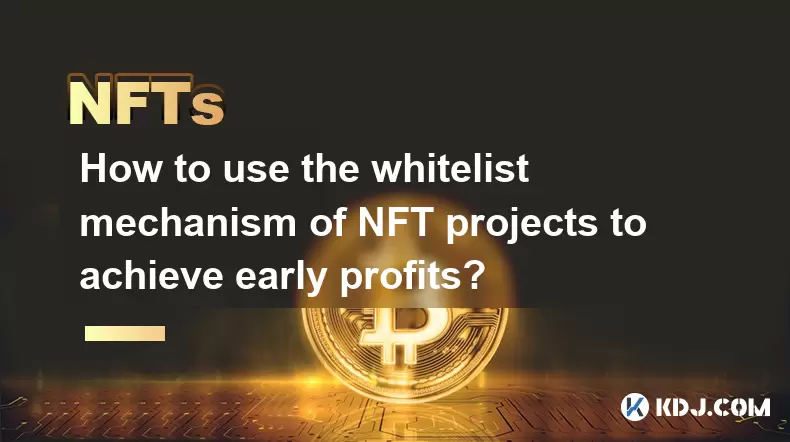
How to use the whitelist mechanism of NFT projects to achieve early profits?
Jun 21,2025 at 03:49am
Understanding the Whitelist Mechanism in NFT ProjectsThe whitelist mechanism is a popular strategy used by NFT project developers to allocate early access or exclusive minting rights to a select group of users. This system allows participants on the whitelist to mint NFTs before they are released to the general public, often at lower prices and with few...
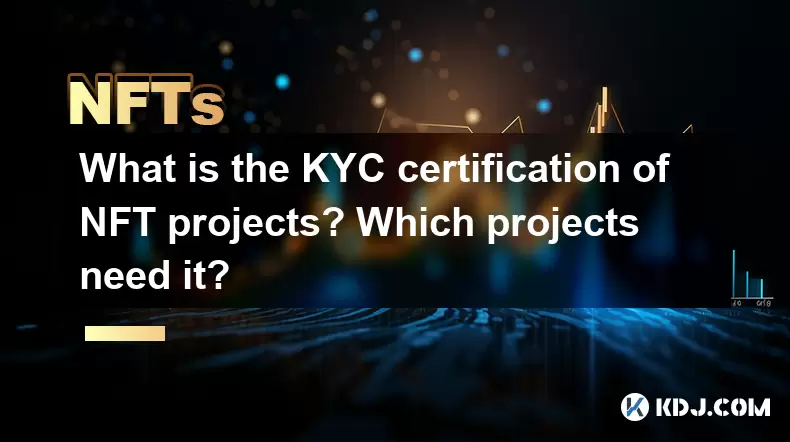
What is the KYC certification of NFT projects? Which projects need it?
Jun 21,2025 at 03:08pm
Understanding KYC Certification in the NFT SpaceKYC, or Know Your Customer, is a regulatory process used by businesses to verify the identity of their clients. In the context of NFT projects, KYC certification refers to the verification of user identities before they can participate in minting, trading, or selling NFTs on a platform. This practice is in...
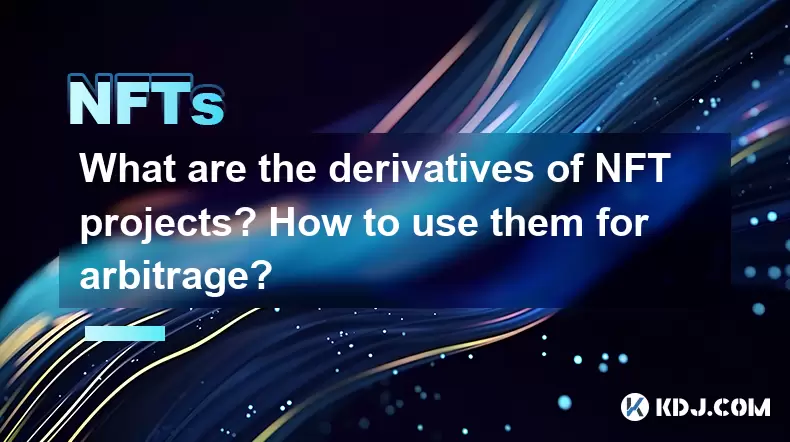
What are the derivatives of NFT projects? How to use them for arbitrage?
Jun 20,2025 at 06:14am
Understanding the Derivatives of NFT ProjectsNFTs, or non-fungible tokens, have evolved beyond simple digital collectibles. In recent years, derivatives of NFT projects have emerged as a new financial layer within the blockchain ecosystem. These derivatives are essentially financial instruments derived from the value and performance of underlying NFT as...

How are NFTs stored and traded? What are the common technical standards?
Jun 20,2025 at 08:49am
Understanding NFT Storage MechanismsNon-Fungible Tokens (NFTs) are digital assets that represent ownership of a unique item or piece of content, such as art, music, videos, or virtual real estate. The way NFTs are stored is crucial to their security and accessibility. Most NFTs are built on blockchain platforms like Ethereum, and the actual file—such as...

How to evaluate the value of NFT projects? Analysis from six dimensions
Jun 21,2025 at 02:28pm
1. Project Background and Team CredibilityEvaluating the value of NFT projects begins with a thorough understanding of its background and team composition. A credible project is usually backed by experienced developers, designers, and marketers who have a proven track record in blockchain or digital art industries. The presence of identifiable team memb...

What is the difference between NFT and digital collectibles? A must-read guide for beginners
Jun 19,2025 at 09:42pm
Understanding the Basics of NFTsNFTs, or Non-Fungible Tokens, are unique digital assets that represent ownership of a specific item or piece of content on the blockchain. Unlike cryptocurrencies such as Bitcoin or Ethereum, which are fungible and can be exchanged one-for-one, each NFT has distinct properties and cannot be directly replaced by another to...

How to use the whitelist mechanism of NFT projects to achieve early profits?
Jun 21,2025 at 03:49am
Understanding the Whitelist Mechanism in NFT ProjectsThe whitelist mechanism is a popular strategy used by NFT project developers to allocate early access or exclusive minting rights to a select group of users. This system allows participants on the whitelist to mint NFTs before they are released to the general public, often at lower prices and with few...

What is the KYC certification of NFT projects? Which projects need it?
Jun 21,2025 at 03:08pm
Understanding KYC Certification in the NFT SpaceKYC, or Know Your Customer, is a regulatory process used by businesses to verify the identity of their clients. In the context of NFT projects, KYC certification refers to the verification of user identities before they can participate in minting, trading, or selling NFTs on a platform. This practice is in...

What are the derivatives of NFT projects? How to use them for arbitrage?
Jun 20,2025 at 06:14am
Understanding the Derivatives of NFT ProjectsNFTs, or non-fungible tokens, have evolved beyond simple digital collectibles. In recent years, derivatives of NFT projects have emerged as a new financial layer within the blockchain ecosystem. These derivatives are essentially financial instruments derived from the value and performance of underlying NFT as...
See all articles





















